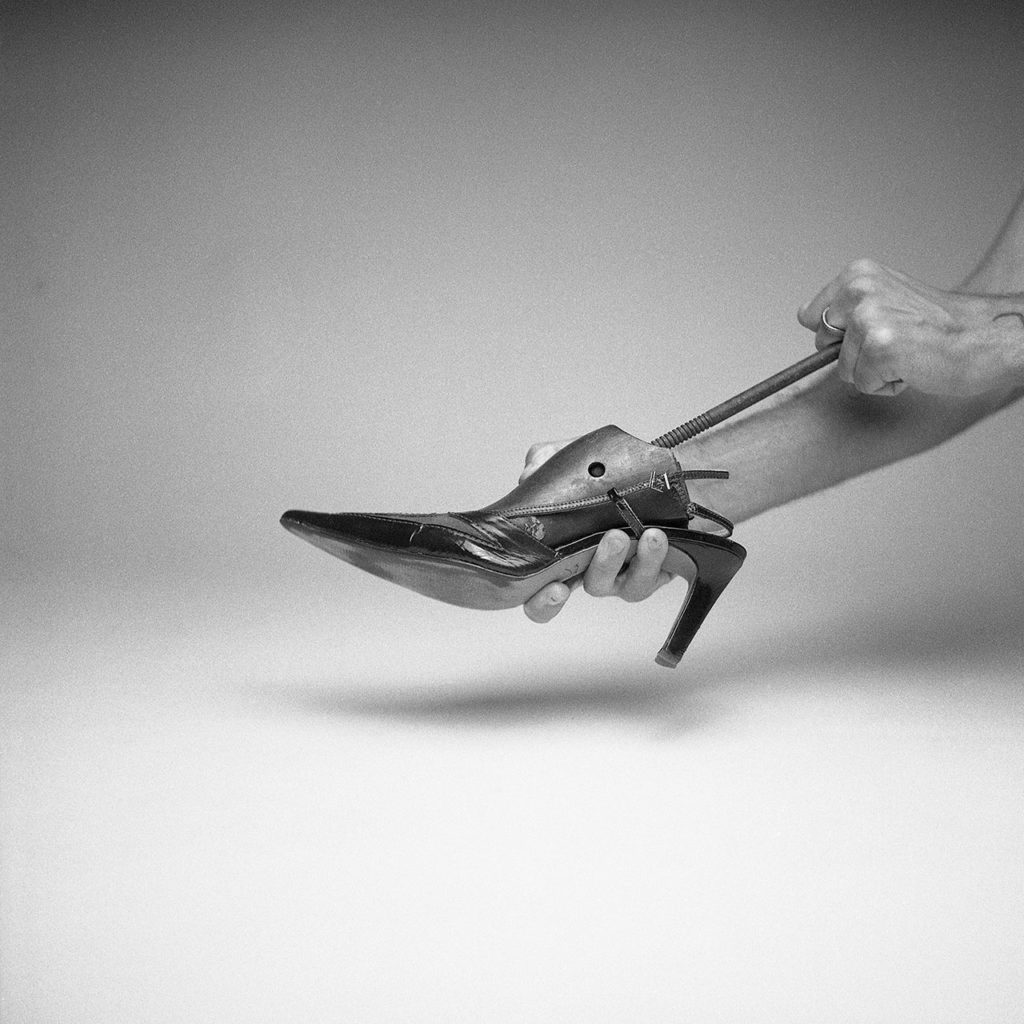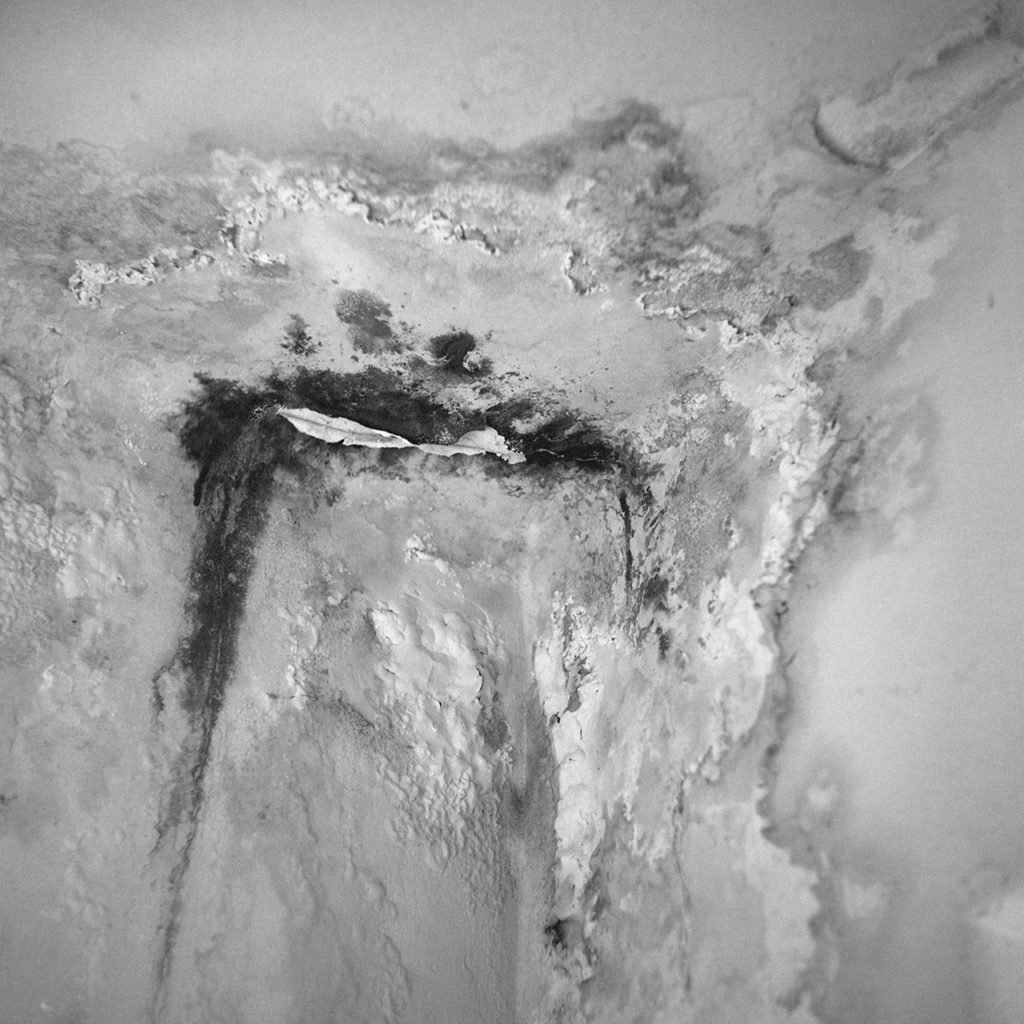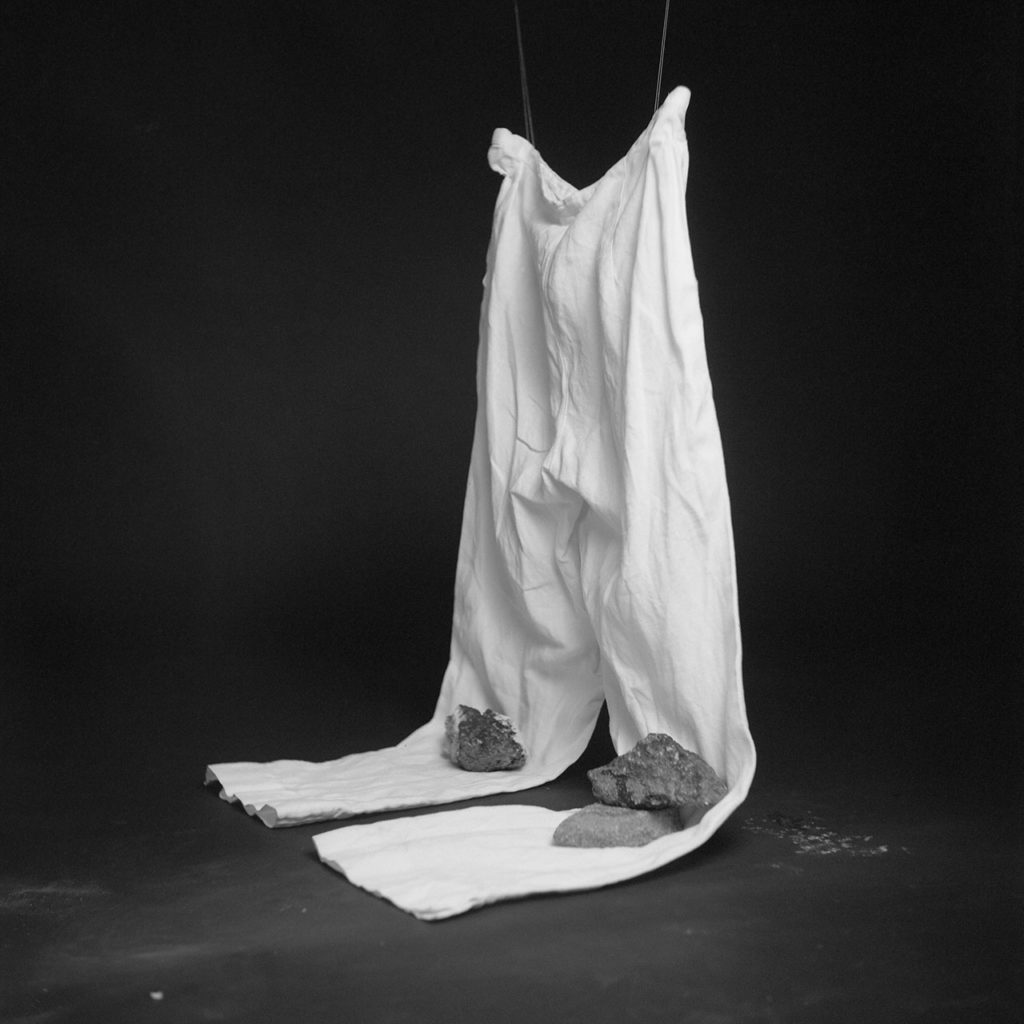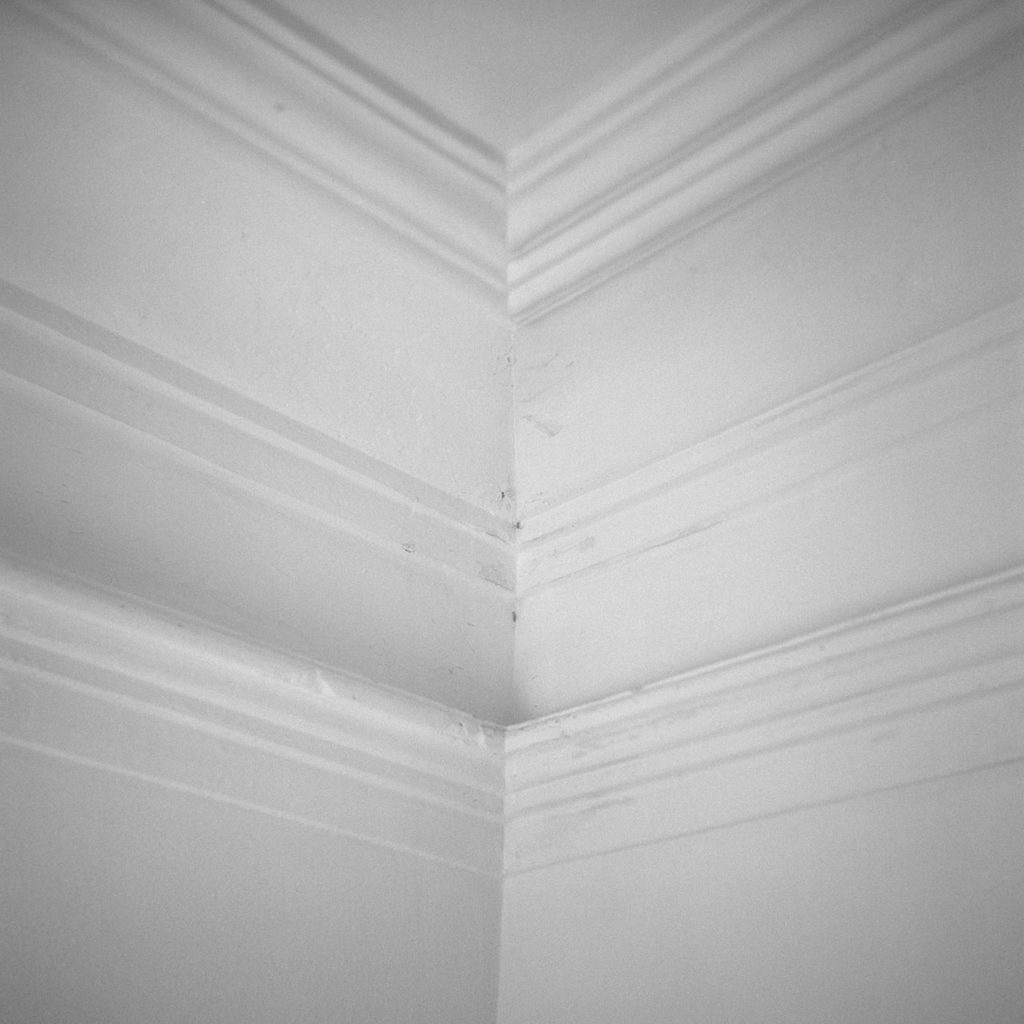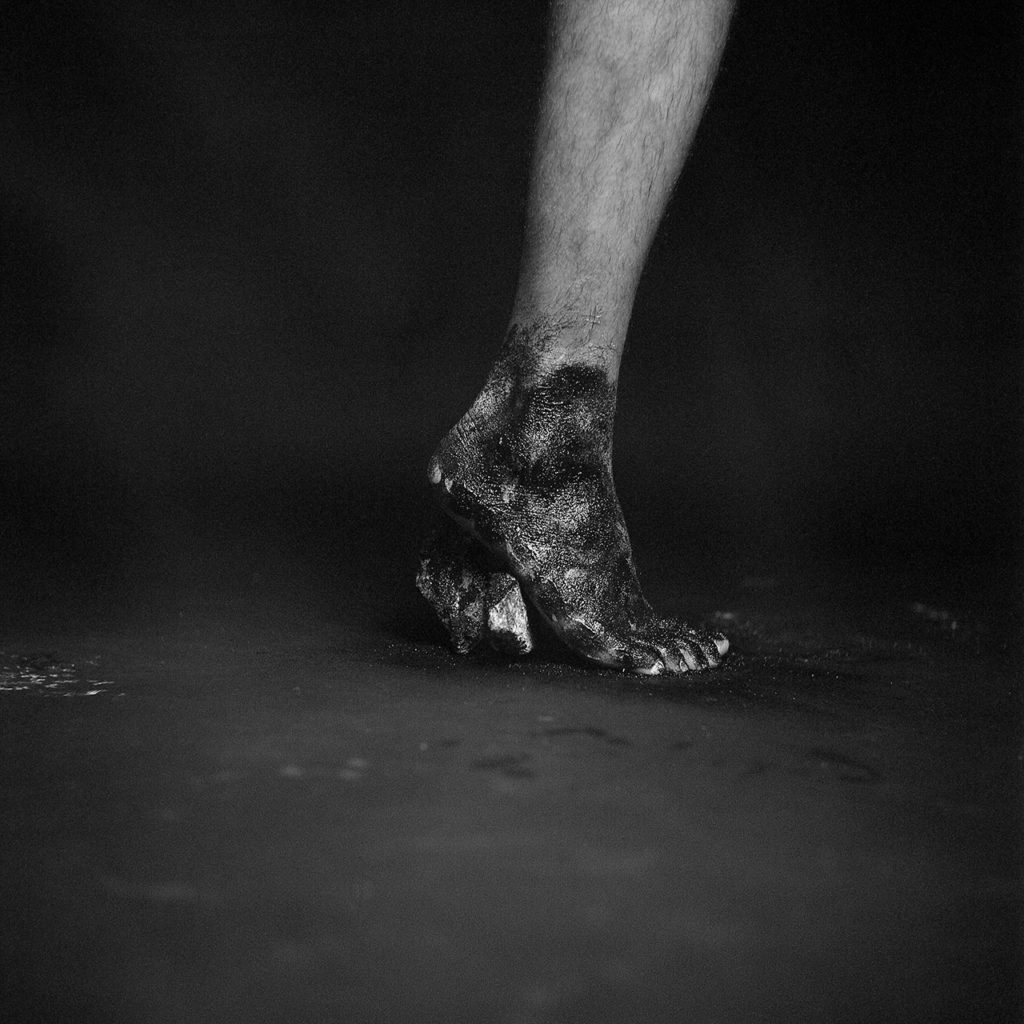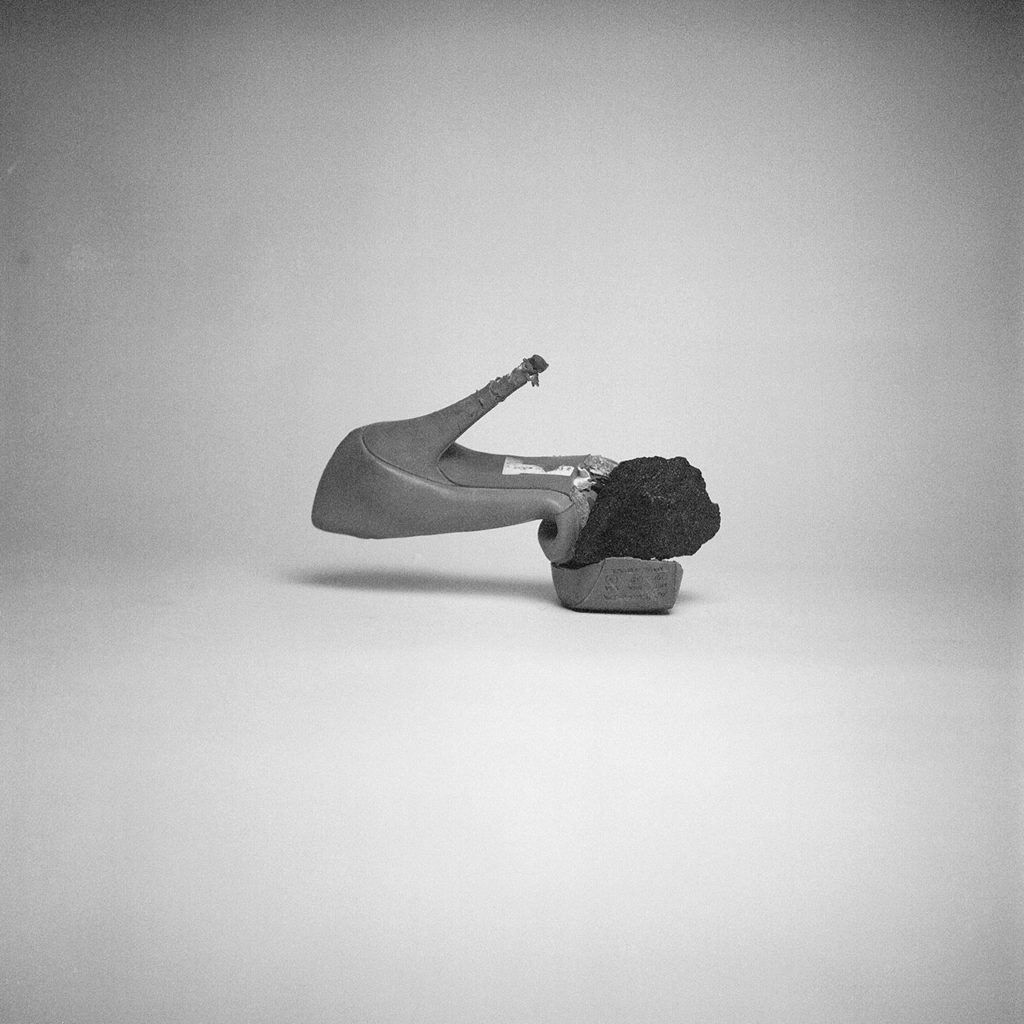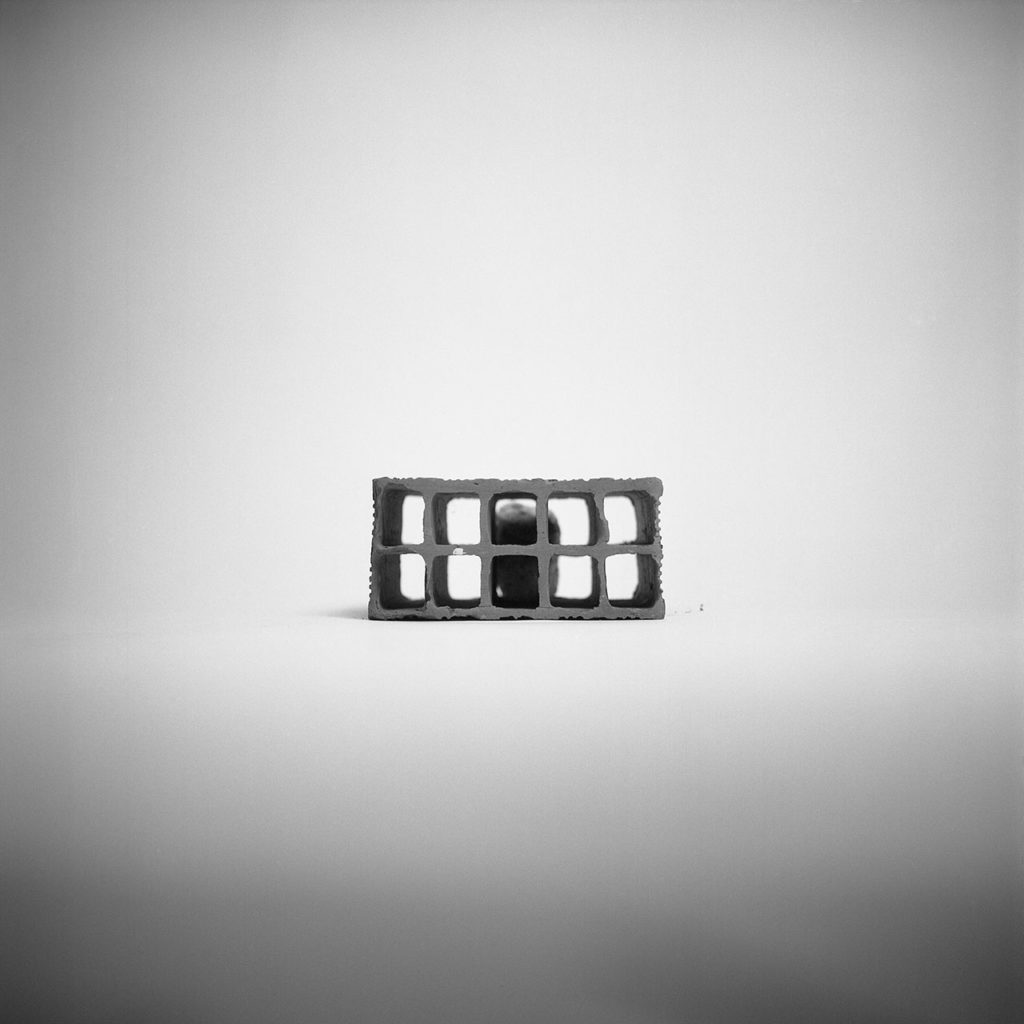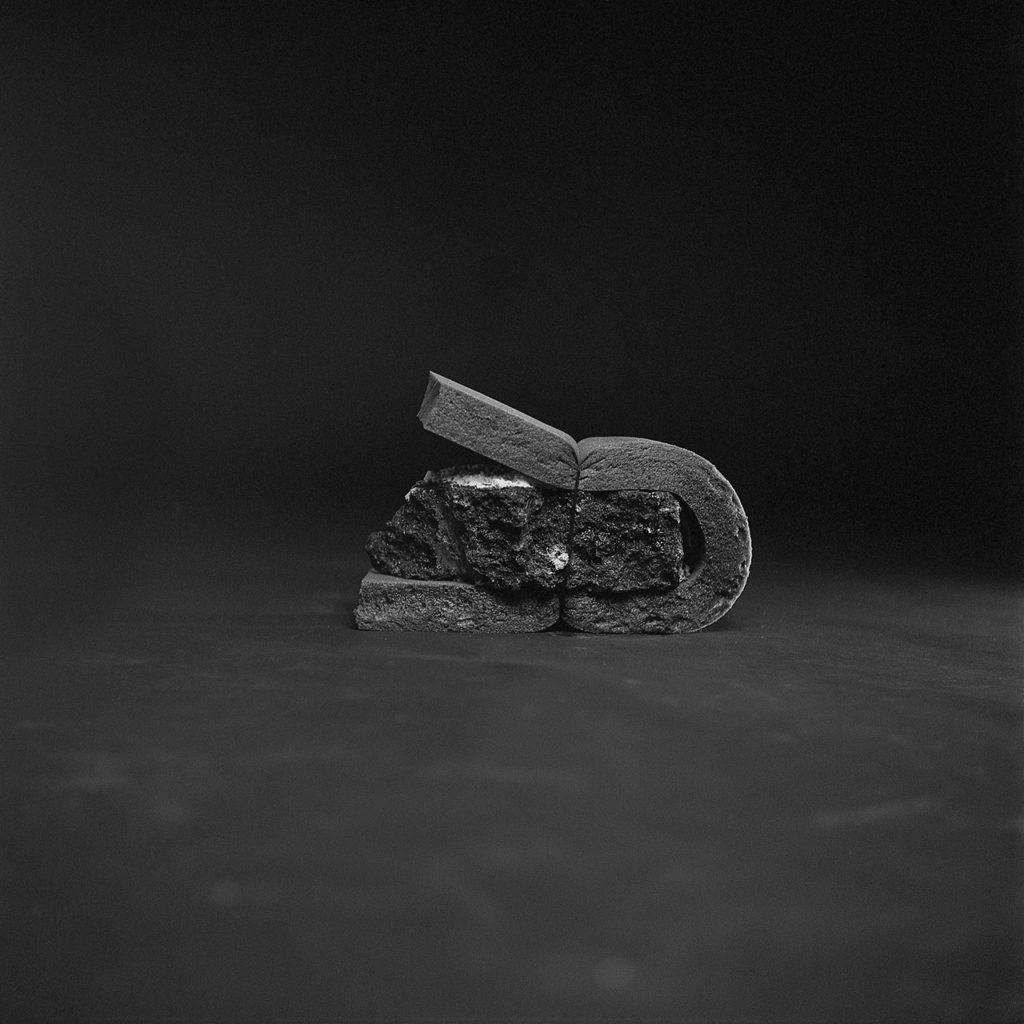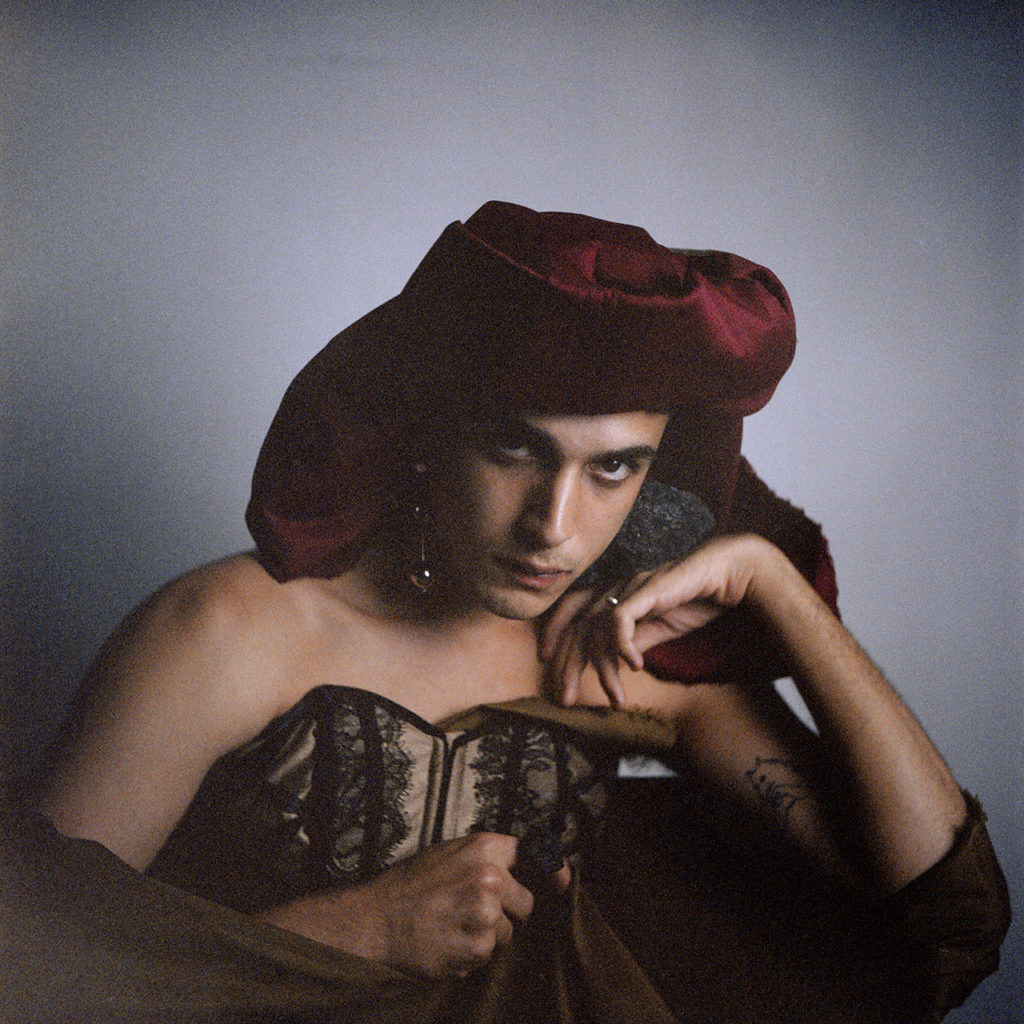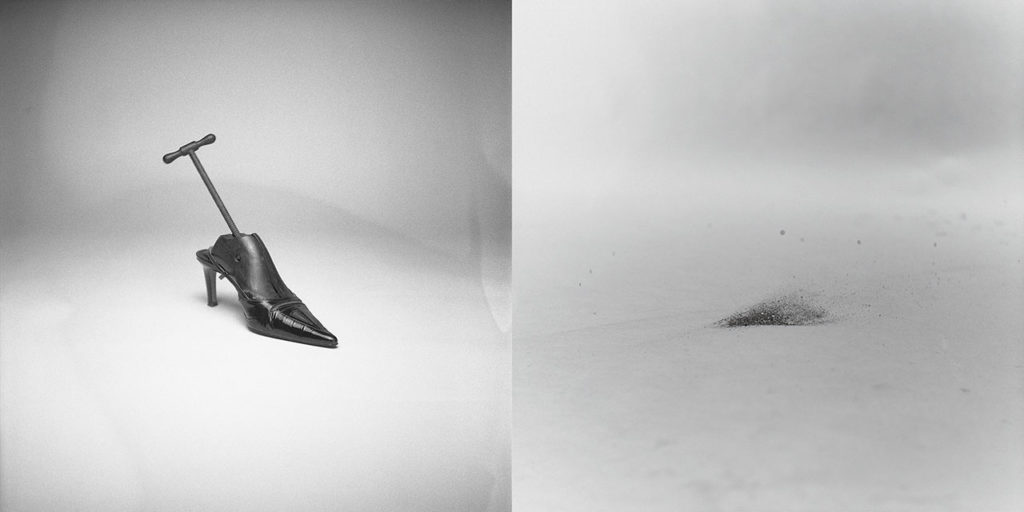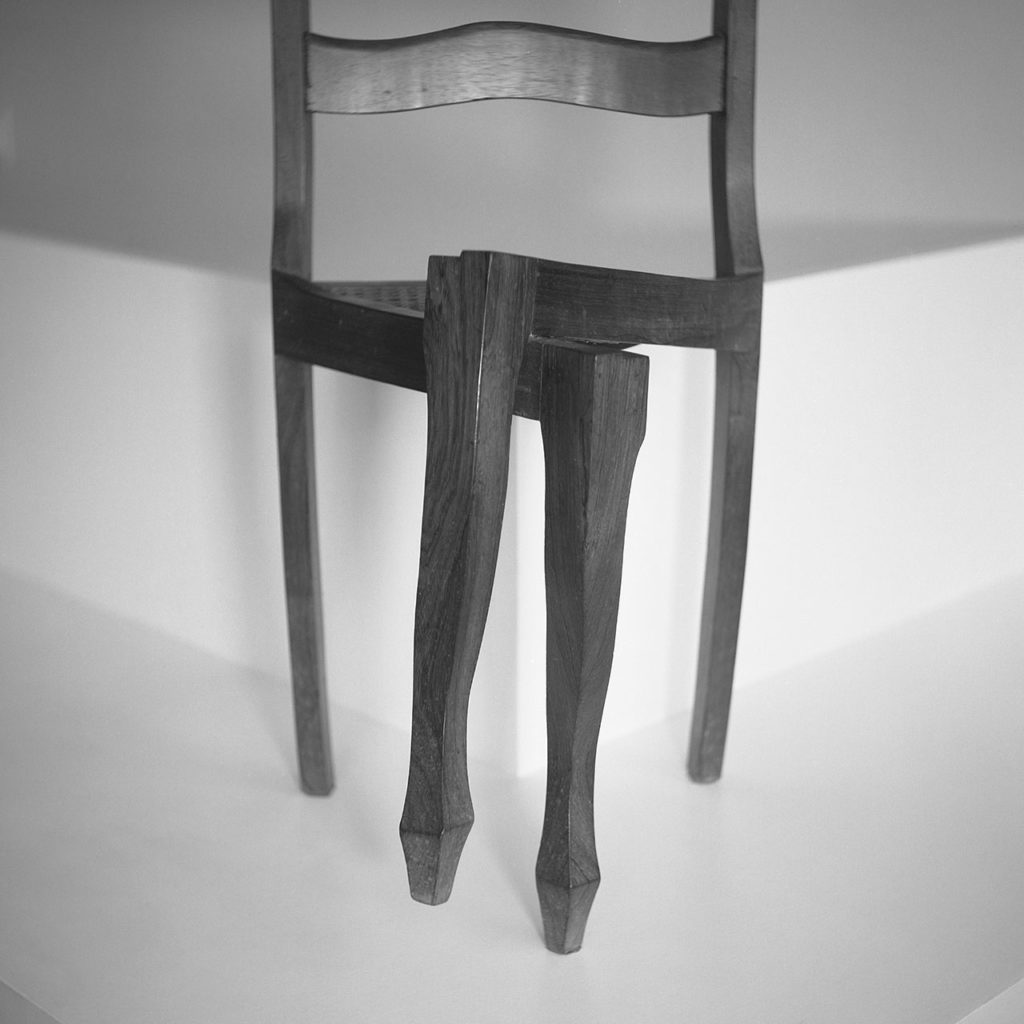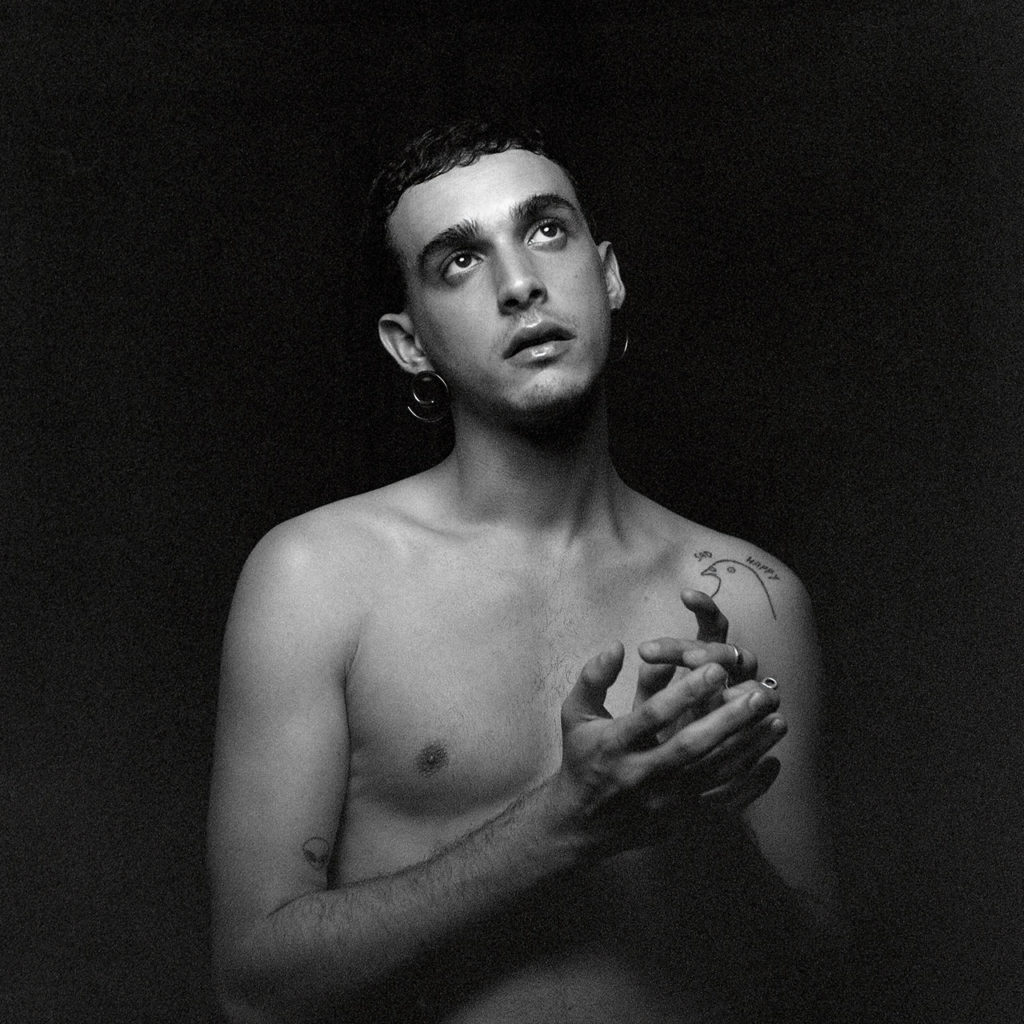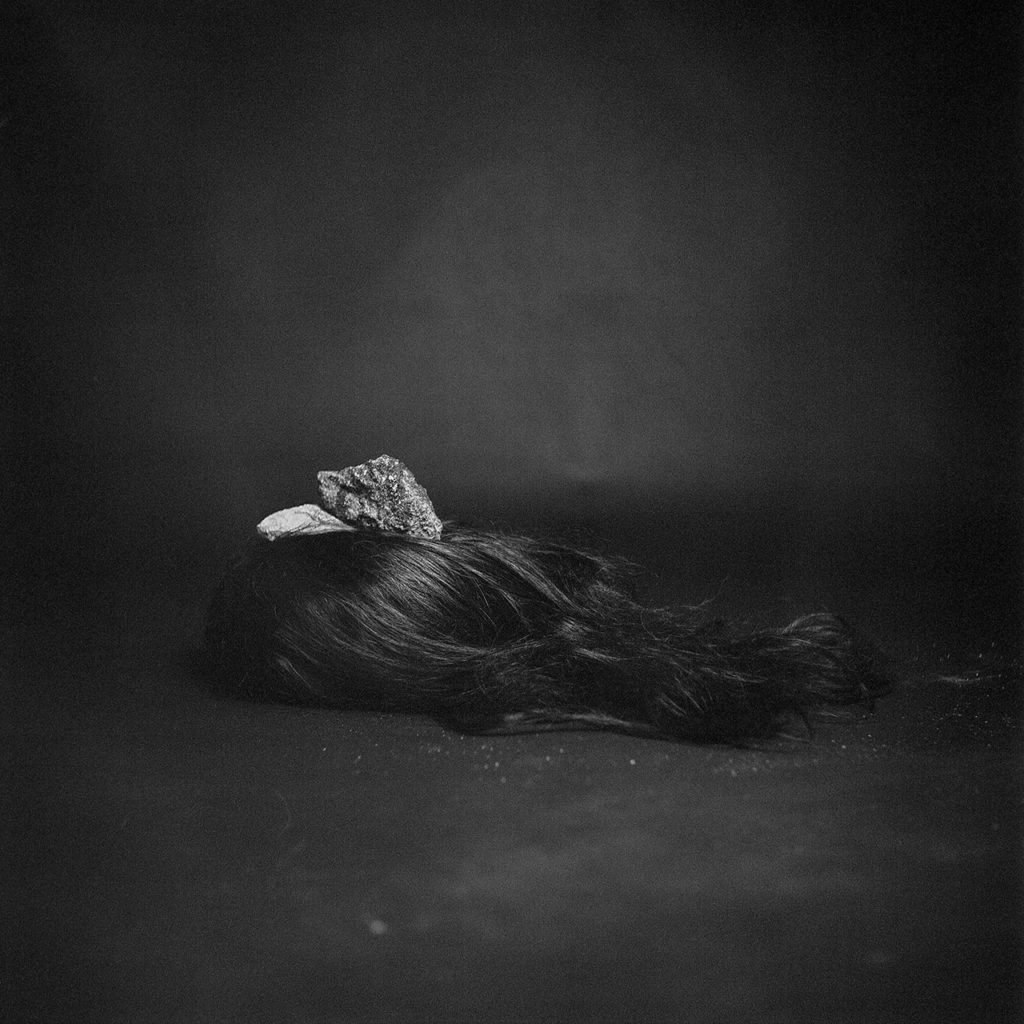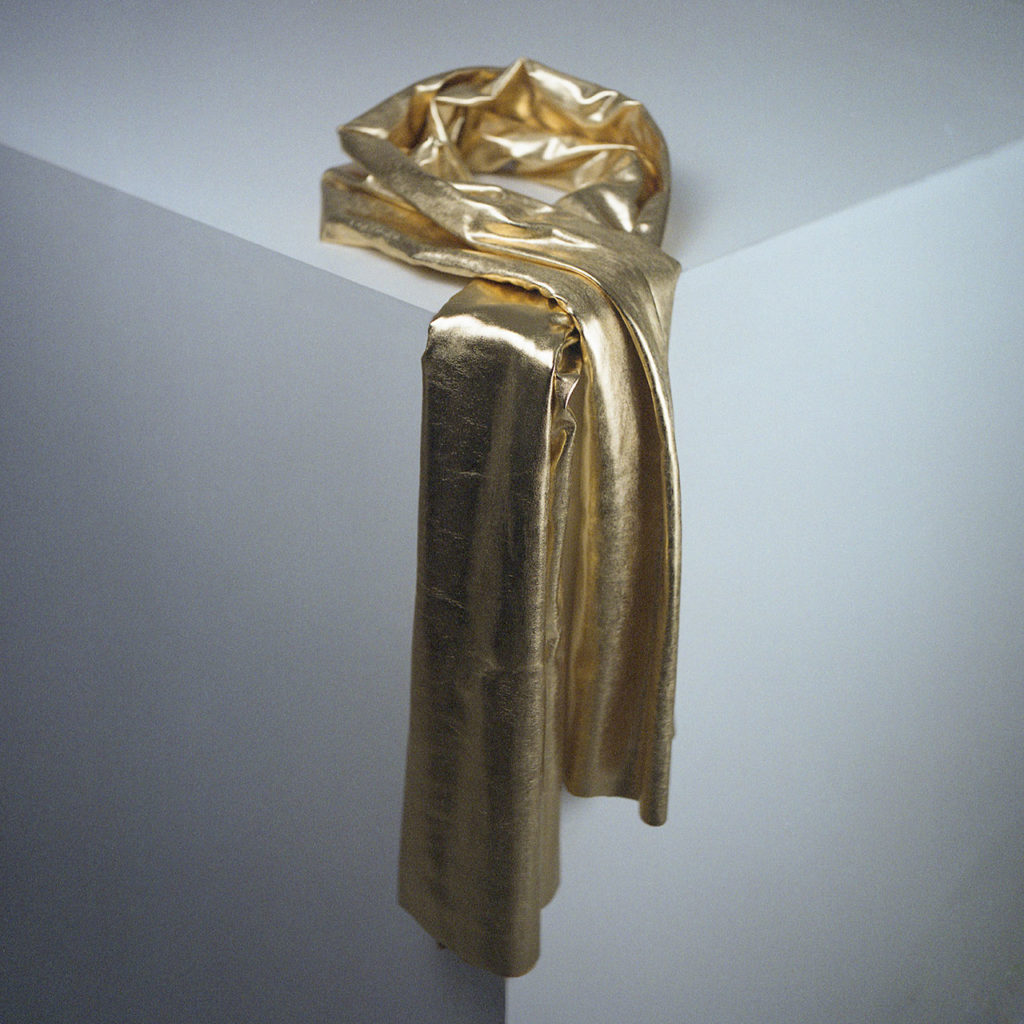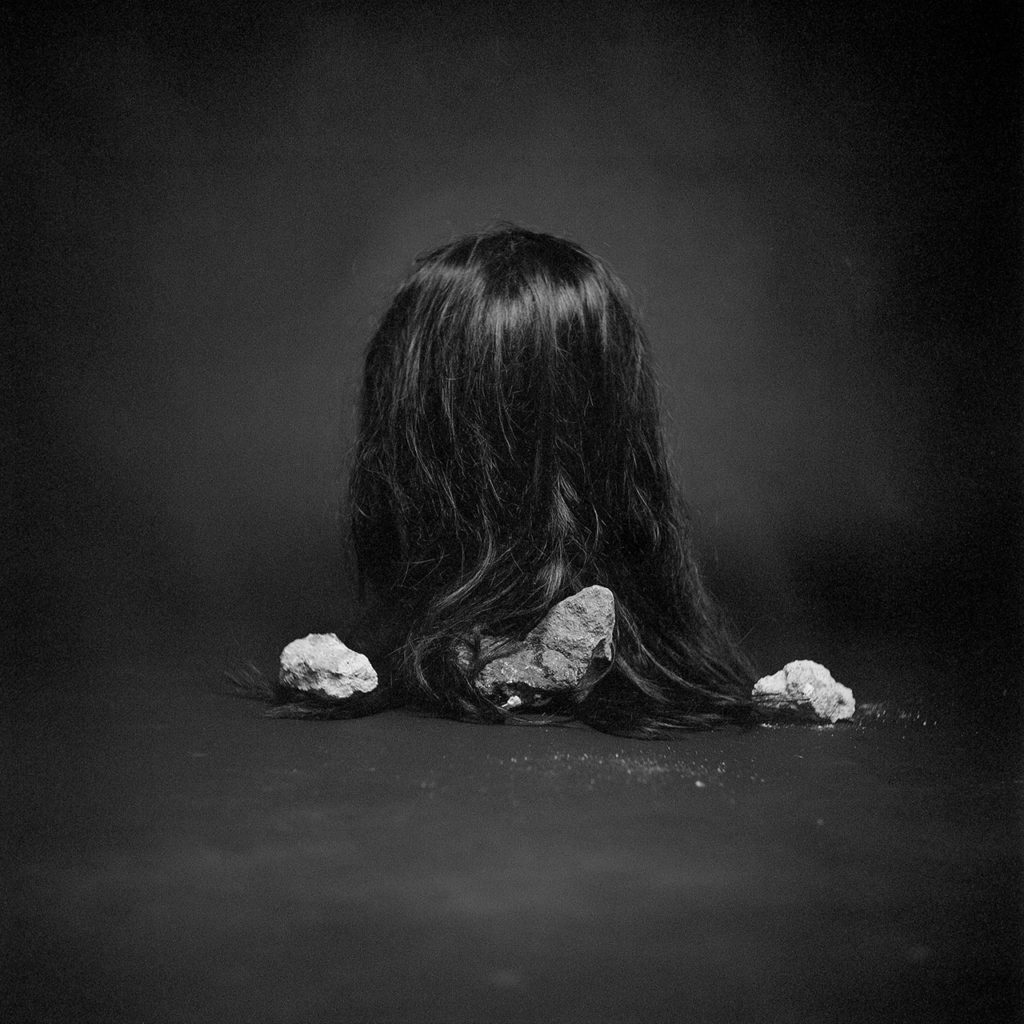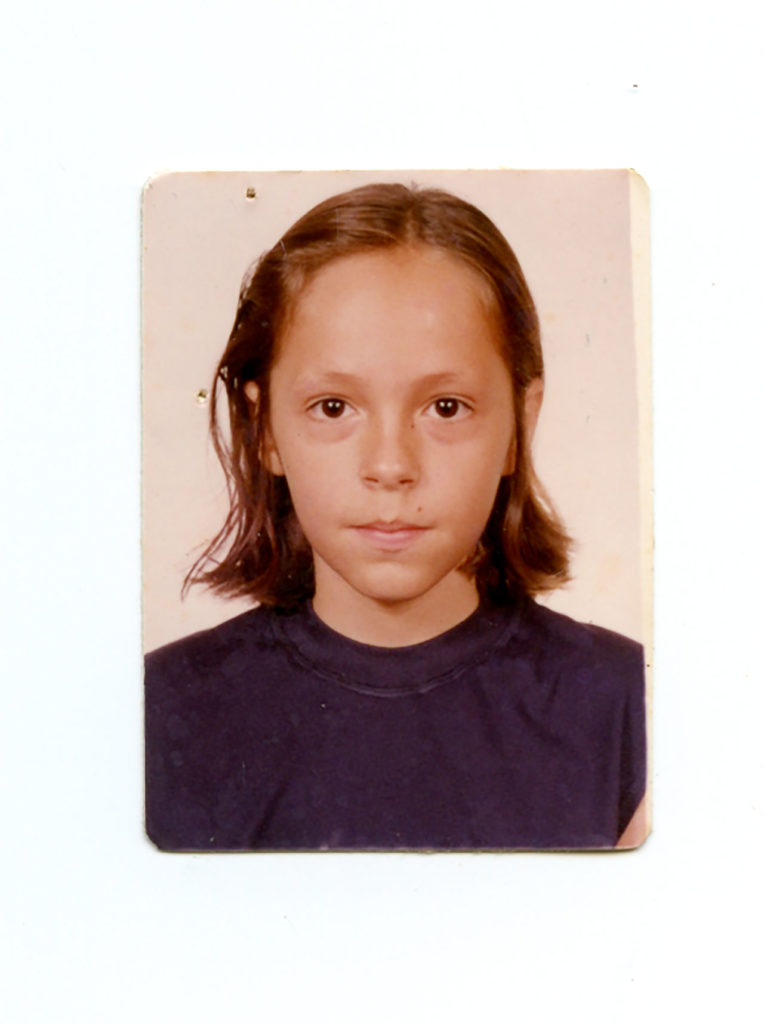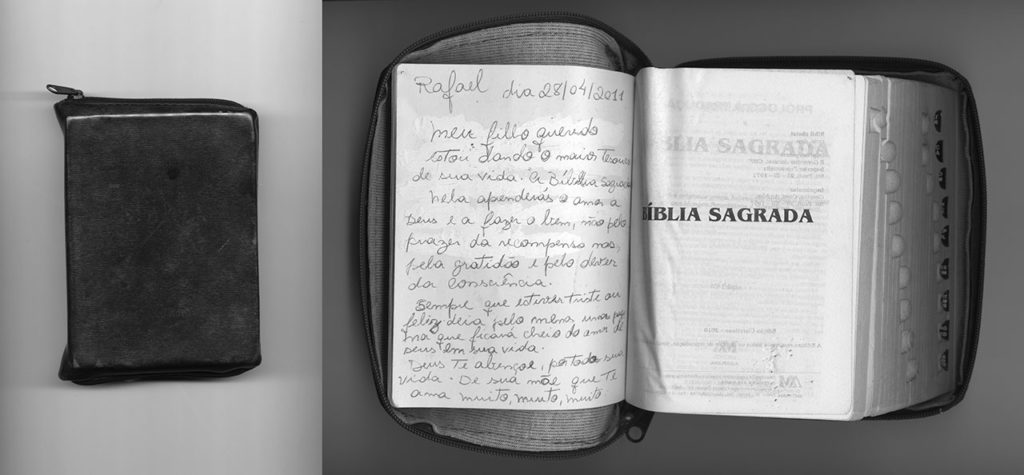Rodrigo Pinheiro and gal Marinelli –
gal and Hiroshima
-
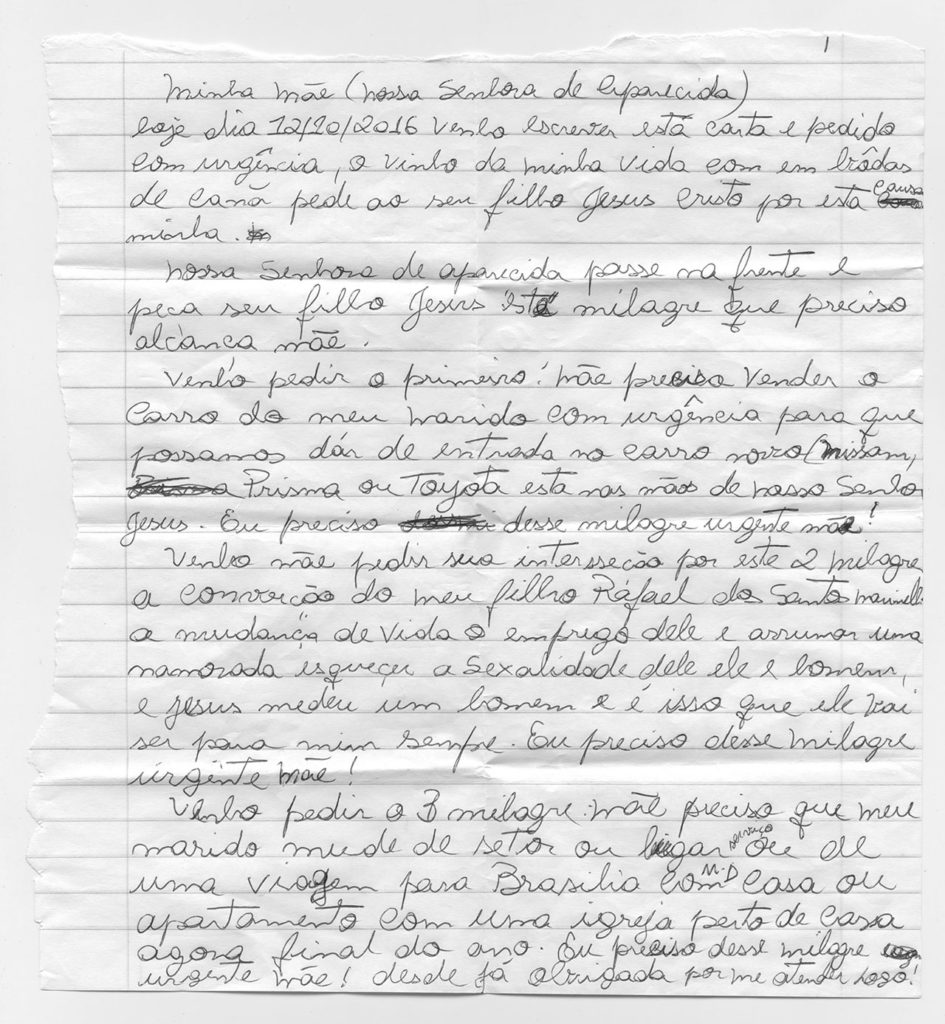
- Excerpt from the letter: „I come, holy mother, to ask for your intercession for this second miracle. The conversion of my son, Rafael dos Santos Marinelli, to the change of life, his job, and finding a girlfriend, forgetting his sexuality. He’s a man, Jesus gave me a man, and that’s what he will always be for me. I need this miracle urgently, mother.“
Audio Guide read by Frederik Busch
Rodrigo Pinheiro (Brazil)
and gal Marinelli
Rodrigo Pinheiro grew up in the periphery of Rio de Janeiro. He graduated in cinema and co-directed two feature documentaries. His work comprises experimental shorts, film essays and photography.
In 2018, his photobook “Tornaras” was published independently in a limited edition. “Tornaras” won the Best Portfolio award at the Fotorio Resiste Festival, Best Portfolio at Ateliê da Imagem 2018 and was named one of the 7 highlights of the year at the ZUM festival. The book was widely exhibited at festivals and fairs, among them Paris Photo and the Les Rencontres d’Arles.
Rodrigo about gal and Hiroshima
“gal and Hiroshima” is a collaborative series. It reflects what it means to have a — what we call — corpa, a portuguese word that refers to the actual body of a LGBTQIA+ person that has no and every gender. As I child my nickname was hiroshime, because i was born on august 6th, the day the atomic bomb was dropped on hiroshima. Harry S. Truman was the US President at that time. Around the the age of ten stones were thrown at me in a street. My partner gal and I went back to the street where the stoning happened. Long hair has become a symbol. Looking like a girl brought a lot of violence.
We returned to our home with a backpack full of rubble and asphalt. Then we thought, what would a child do to ease this experience? We tied pieces of foam to the stones using string. Simple. That way it couldn’t hurt anymore.
From there, other sculptures were created.
These photographs use a scientific approach to tell what happened to me as a child and what still happens to gal today. gal is shown as herself, wearing a simple dress. Also as a religious figure, a little bit like a saint, one of those who were also stoned. In the middle of that process something very strange happened. We discovered, by accident, that gal was born on the same day as Harry S. Truman, the US President who dropped the bomb. We were perplexed. Imagine. I grew up being called Hiroshima and I discover that my partner launched me.
That day the narrative of the series changed. gal had just changed her/them name, we were wearing dresses and heels everywhere, and all of this caused a huge commotion in her religious family. It wasn’t overnight. gal has always been themself. But to the mother’s eyes, gal had never been. gal was the bomb with its impetuosity, the one that launches. And I was Hiroshima, what had been territory but isn’t as vulnerable as before.
The Jury Statement
In a setting of gender-based violence and ominous historical and family links, “gal and Hiroshima” develops an intensive visual impact that also speaks of the power of kindred spirits. The painful beauty of the pictures reminds us that violence is only possible if it is embedded in historical and political contexts.
The minimalist portraits, objects, still lifes and artefacts are noticeably imbued with a resistant spirit, which transforms them into metaphors of defensiveness and autonomy.

